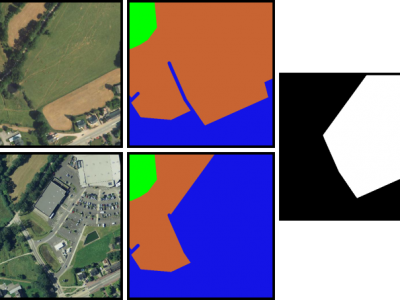Sensors

Shape displays, devices which can actively alter their surface topology, have promising applications for human-robot-collaboration, haptic interaction, and manufacturing. However, these use-cases are limited due to existing challenges in dynamic object control on the shape display surface. This dataset provides experimental data supporting a general-purpose, extendable potential field algorithm that is used to control velocity and object motion on shape display surfaces. The dataset includes ball position and velocity data over time for multiple trials of experiments.
- Categories:
 3 Views
3 ViewsWe investigated the long term functionality of the designed PMCS in a practical use case where we monitored plant growth of classical horticulture Dianthus flowers (Dianthus carthusianorum) under the effect of plastic mulching over a period of 4 months. This use case represents a common phenological monitoring case that can be used in agricultural studies. For this, we integrated our PMCS in an embedded vision camera equipped with the openMV H7 Plus board in a waterproof housing [26]. The system shown in Fig.
- Categories:
 53 Views
53 ViewsIn our ever-expanding world of advanced satellite and communications systems, there's a growing challenge for passive radiometer sensors used in the Earth observation like 5G. These passive sensors are challenged by risks from radio frequency interference (RFI) caused by anthropogenic signals. To address this, we urgently need effective methods to quantify the impacts of 5G on Earth observing radiometers. Unfortunately, the lack of substantial datasets in the radio frequency (RF) domain, especially for active/passive coexistence, hinders progress.
- Categories:
 459 Views
459 ViewsAnomaly detection plays a crucial role in various domains, including but not limited to cybersecurity, space science, finance, and healthcare. However, the lack of standardized benchmark datasets hinders the comparative evaluation of anomaly detection algorithms. In this work, we address this gap by presenting a curated collection of preprocessed datasets for spacecraft anomalies sourced from multiple sources. These datasets cover a diverse range of anomalies and real-world scenarios for the spacecrafts.
- Categories:
 761 Views
761 ViewsThe dataset presents a comprehensive collection of environmental sensor measurements conducted under conditions typical of the harsh environment found in high-energy physics detectors. The dataset includes measurements of relative humidity obtained from a capacitive-based humidity sensor:
- Categories:
 175 Views
175 Views
This is the experimental data of the OFBG-BIWS for underwater applications. The efficient perception of the underwater flow field is of great significance to the development of underwater intelligent equipment. Driven by unique whisker receptors of the harbor seals, this study proposes and demonstrates a bio-inspired whisker sensor based on orthometric Fiber Bragg Grating (OFBG-BIWS). Four FBGs are deployed around an artificial whisker as basic sensing units. The hydrodynamic information is encoded as the wavelength evolution of the FBGs.
- Categories:
 4 Views
4 Views
The dataset consists of experimental data collected in an anechoic tank, with a specific setup involving single-source transmission and reception by a 6-element circular array with a radius of 0.046 meters. The transmitted signals include common wideband signals used in underwater positioning and communication, such as chirps, single-carrier QPSK, multi-tone signals, and OFDM signals. The transmitter and receiver are located at the same depth, and the receiving array rotates 360 degrees with 30-degree intervals.
- Categories:
 246 Views
246 Views
As semiconductor devices have become increasingly miniaturized, the ability to control very small Critical Dimensions (CDs) during the etching process has become crucial through controlled plasma processes. Hence, diagnosing plasma and reflecting this in the process to enhance yield is of paramount importance. Typically, a Single Langmuir Probe (SLP) is utilized for plasma diagnostics.
- Categories:
 147 Views
147 Views
Recent semiconductor devices have embraced structural modifications, including vertical stacking, to overcome the limitations of miniaturization. Particularly, memory devices have seen improvements through the transition to 3D stack structures. To address the challenges of etching high aspect ratio contact holes, the Bosch process, which alternates between deposition of a passivation layer on the pattern wall to prevent sidewall etching and etching steps, has been utilized.
- Categories:
 86 Views
86 ViewsThe Partial Discharge - Localisation Dataset, abbreviated: PD-Loc Dataset is an extensive collection of acoustic data specifically curated for the advancement of Partial Discharge (PD) localisation techniques within electrical machinery. Developed using a precision-engineered 32-sensor acoustic array, this dataset encompasses a wide array of signals, including chirps, white Gaussian noise, and PD signals.
- Categories:
 813 Views
813 Views



